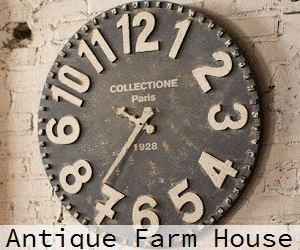To prune or not to prune? That is the question. My all-time favorite flowering bush is the hydrangea. One might think that by virtue of having 27 hydrangea bushes in my own yard I would be an expert as to the how's and why's of pruning them. But that couldn't be further from the truth.
Which got me thinking -- was it something I did to cause the bushes not to bloom so prolifically? At first I blamed the weather. But over time, the more I read about the proper care of hydrangeas, I realized that the culprit might truly be me. It was nothing I could put my finger on, but I had a gut feeling that perhaps my willy-nilly "pruning" (pulling out old, dead stems some time after blooming season ends) had something to do with it. As a result, I became paralyzed by fear of doing the wrong thing.
Old Versus New Wood
For whatever reason, I have struggled for years with the whole concept of blooms that come from old wood versus new wood. I knew it was a "thing," but became totally glassy-eyed whenever I'd come across a magazine article or blog post about it. That is, until our local newspaper recently ran an article about it. And. I. Got. It. Hallelujah! So, allow me to break it down for you in a way that I think even the most confused hydrangea lover will understand.
Old Wood Bloomers
Perfect example of new blooms on old wood
1. Some flowering bushes, after a prolific spring and/or summer of blooming, begin their dormant season. The blooming stops. If they're the type that re-blooms on old wood, you need to prune them within two weeks after seeing the last blooms. That's because if you wait too long, the new buds growing on the old wood stems will have already formed and if you prune, you'll be cutting away any chance for new blooms next spring!
Examples of Old Wood Bloomers: Classic varieties of big leaf hydrangeas (Hydrangea macrophylla) (see above label), and oakleaf hydrangeas (Hydrangea quercifolia)
Takeaway: For old wood bloomers, if you choose to prune, wait until right after blooming season ends to do your pruning so that you're assured of getting as many blooms as possible the following blooming season.
New Wood Bloomers
2. To the contrary, new wood bloomers, after their blooming season ends, will NOT begin to sprout new buds on their old, what eventually appear-to-be-dead wood stems. They will not sprout new buds again until after forming new branches the following blooming season! So that means you can safely prune them in winter. Just do not prune them after new buds have formed on the new stems! Most new-wood bloomers tend to bloom in mid-to-late summer or fall.
Examples of New Wood Bloomers: Smooth hydrangeas like Annabelle (Hydrangea arborescens) and panicle hydrangeas like Limelight (Hydrangea paniculata)
Takeaway: For new wood bloomers, feel free to prune any time after their blooming season ends, including during the winter. Just make sure it's done before the new wood stems, or branches, and buds appear.
How To Tell Which Is Which?
1. Keep the plant labels so that you know the botanical name and the cultivated variety name. If its blooming preference is not apparent or listed on the label you can always look it up either at the library or online to see whether it blooms on old wood or new wood and then prune accordingly.
2. Get on out there and investigate! In the above photo you can clearly see a new bud growing on some old wood stems. That should set off an alarm that says "Do Not Prune Now!"
I warn you that if you're anything like me, it will be very tempting to want to pull out those old, ugly wood stems. That's why I used to do it -- I couldn't stand looking at them! But now I know better. I know that if I just wait patiently, I will be rewarded with a beautiful, substantial nature's bounty. Just take a look.
Yes, these flowers bloomed on that very same ugly dead bush, pictured above. As big leaf hydrangeas (Hydrangea macrophylla) they bloom on old wood.

In some of the photos you'll also see smaller, bright green blooms. They're similar to the Annabelle hydrangea and bloom on new wood in spring. That means I can prune them any time I want after their blooming season is over as long as it's before the new stems and new buds emerge the following season.
Since almost all of my 27 hydrangea bushes are old wood bloomers I think I'll just sit back and let nature take its course. Technically I could prune them once their upcoming blooming season ends. But I can just as easily skip the pruning. I'm pretty confident that I'll still end up with a plentiful harvest of blooms each year. But if I do choose to prune, I'll know when to do it safely without jeopardizing their ability to produce new blooms.
Over the years I've written about and shared many photos
of my gorgeous hydrangeas, both fresh and after they've dried.
Here are some in a galvanized vintage bucket on
And here are some from one year's bumper crop of hydrangeas.
I also arranged some of them in my
Affordable Olive Buckets in the foyer.
I also shared my love for
I even compiled a Hydrangea Retrospective
to chronicle my many posts about hydrangeas!
And that's only a fraction of the times I've shared my beautiful blooms! If you're interested in my Hydrangea Pruning Guide I know you'll be interested in reading Hydrangea School and Rusty Vintage Wire Basket. It's chock full of helpful information about hydrangea bushes and how to grow them successfully.
Well, that's it until next time, friends!
I hope you enjoyed reading Hydrangea Pruning Guide
Along With Tips and Tricks
For Growing and Displaying Hydrangeas.
Along With Tips and Tricks
For Growing and Displaying Hydrangeas.
Be sure to stay in touch:
Just click on my Facebook, Pinterest, Twitter or Instagram icons in my top right sidebar. You can also sign up there to receive my blog posts via email as well.
If you sign up via email, you should receive a confirmation
email in your inbox. If not, please check your spam folder
(and/or your "Promotions" folder if you have gmail)!
Thank you!
Don't forget to Pin it!
Don’t miss another thrifty,
DIY home décor post!
































Leave a Comment!
Good Morning Kathleen,
I loved your post this morning. I am getting prepared to plant some flowering plants in my new backyard. I have always loved Hydrangea's but never had great success. I want to plant a lot of them in the new yard so all these tips are great. I also heard that you have to have multiples for them to bloom, they have to have a mate. Have you found that to be true? Also heard the acid in the soil determines the colors. They are beautiful. Thanks for all the tips. Have a great new week.
Kris
Thanks for the hydrangea tips. I think my bushes are the ones that bloom on old wood. It is raining now but I'm going to check as soon as I can.
Thank you for this post. I'm going to share it with my husband. Last year I walked outside just as he was cutting the last branch on my hydrangea with the tiny little buds forming. Needless to say, I had no blooms last year. He promised to never touch them again.
This was interesting Kathleen. I've been through the same process as you. In fact, I know I've killed mine before by pulling out the old wood too much, so now I hardly prune them at all b/c I have known when to do it/not do it. I have 3 bushes in the front. 2 are the same & one is different. I'm not sure what the 2 different ones are, so I just leave them all alone, LOL.
I am the queen of trimming ANYTHING that looks like old wood, so thanks for this tip ;) I am so jealous of your gorgeous hydrangeas, I've had the hardest time finding the right spot for them in my full sun garden. Lesson learned--when the plant tags say full sun that does not include full sun in Texas! I think I may have finally found the right place last spring, fingers crossed!
This post is pure eye candy, Kathleen...and I learned a lot! Thanks for sharing!
Thank you for a very informative post. Like you, my attempts were a hit and miss. The only pruning advice for Hydrangeas that ever stuck was cut the bush down by 2/3rds...seemed harsh and my plants either failed or were not very tall or flowerey, so I stopped that practice. By a stroke of fate I think I actually pruned correctly last fall, time will tell. I'll have to investigate the hardy lot left and see how to proceed with your tips.
Post a Comment